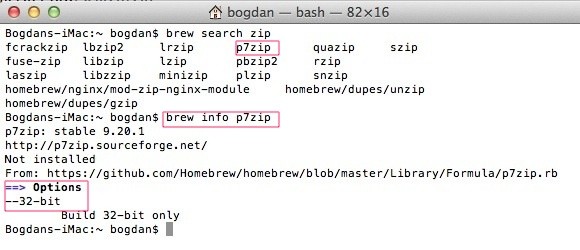

- #Install brew mac m1 install#
- #Install brew mac m1 update#
- #Install brew mac m1 windows 10#
- #Install brew mac m1 software#
/tmp subdirectories because Homebrew gets upset. Homebrew itself can handle spaces, but many build scripts cannot. Directories with names that contain spaces. #Install brew mac m1 update#
TL DR: pick another prefix at your peril!īrew update -force -quiet chmod -R go-w " $(brew -prefix ) /share/zsh" If you decide to use another prefix: don’t open any issues, even if you think they are unrelated to your prefix choice. The main reason Homebrew just works is because we use bottles (binary packages) and most of these require using the default prefix.


Building from source is slow, energy-inefficient, buggy and unsupported. Many things will need to be built from source outside the default prefix.
#Install brew mac m1 install#
However, you shouldn’t install outside the default, supported, best prefix. Technically, you can just extract (or git clone) Homebrew wherever you want.
#Install brew mac m1 windows 10#
Alternative Installs Linux or Windows 10 Subsystem for LinuxĬheck out the Homebrew on Linux installation documentation. in automation scripts), prepend NONINTERACTIVE=1 to the installation command. If you want a non-interactive run of the Homebrew installer that doesn’t prompt for passwords (e.g. using the default Homebrew prefix and, if on macOS, on a supported version). Note, this will take effect in supported configurations (i.e. This will make Homebrew install formulae and casks from the homebrew/core and homebrew/cask taps using local checkouts of these repositories instead of Homebrew’s API. You can use geolocalized Git mirrors to speed up Homebrew’s installation and brew update by setting HOMEBREW_BREW_GIT_REMOTE and/or HOMEBREW_CORE_GIT_REMOTE in your shell environment with this script:
The Bourne-again shell for installation (i.e. Command Line Tools (CLT) for Xcode (from xcode-select -install or. A 64-bit Intel CPU or Apple Silicon CPU 1. You have to confirm everything it will do before it starts. It tells you exactly what it will do before it does it too. It is a careful script it can be run even if you have stuff installed in the preferred prefix already. This prefix is required for most bottles (binary packages) to be used. This script installs Homebrew to its default, supported, best prefix ( /usr/local for macOS Intel, /opt/homebrew for Apple Silicon and /home/linuxbrew/.linuxbrew for Linux) so that you don’t need sudo after Homebrew’s initial installation when you brew install. Note: should be replaced with the username that will access and use brew.Instructions for a supported install of Homebrew are on the homepage. Once Homebrew completes installation run the following two commands: (echo echo 'eval "$(/opt/homebrew/bin/brew shellenv)"') > /Users//.zprofileĮval "$(/opt/homebrew/bin/brew shellenv)" You should close the terminal that you ran the command in and open a new terminal.įrom the new terminal prompt or enter: /bin/bash -c "$(curl -fsSL )" Note: you will be prompted to enter your password and accept the terms and conditions for using xcode-select. In the terminal prompt type: xcode-select -install To install xcode-select you will need to open the terminal app, press command + space: then type "terminal" and press enter. Install xcode-select: xcode-select is a command-line utility on macOS that facilitates switching between different sets of command line developer tools provided by Apple. For more information on Homebrew (brew), please refer to there website located here. Typically used by developers or sysadmins, Homebrew enables and simplifies the installation of packages that are not included in it's core OS. #Install brew mac m1 software#
Homebrew (brew) is a free open-source package manager that allows users to install apps and software on macOS.







 0 kommentar(er)
0 kommentar(er)
